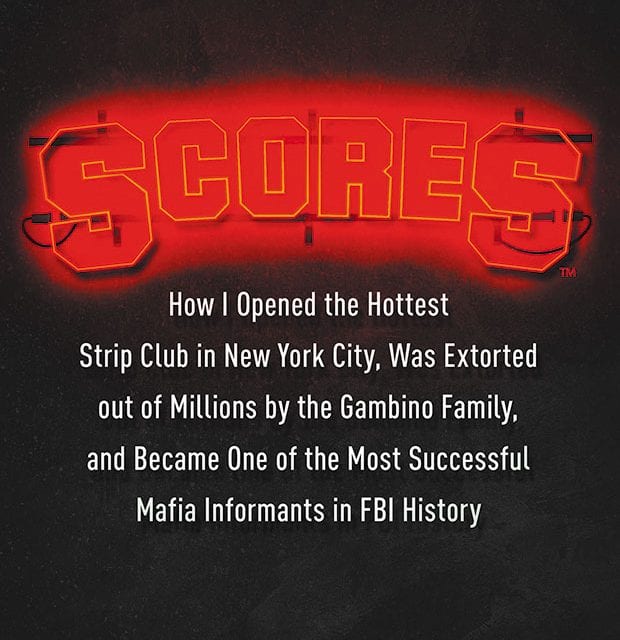Scores: How I Opened the Hottest Strip Club in New York City, Was Extorted Out of Millions by the Gambino Family, and Became One of the Most Successful Mafia informants in FBI History by Michael D. Blutrich (BenBella Books 2017) $26.95; 328 pp.
How does it happen that a gay man would own a mainstream strip club? It was, says Michael Blutrich, a long story that started after he opened his law firm and — in search of an outside investment— purchased an L.A. nightclub. Believing that the success of his California business could transfer to New York, he recalled the excitement of a private banker who claimed he’d always wanted to own an upscale strip club.
Being a closeted gay man, that wasn’t exactly Blutrich’s dream but the idea niggled at his brain. Partnering with the banker and others, they began looking for a building and batting ideas around.
Scores was born, with a planned opening on Halloween night, 1991.
And then the Mafia arrived.
In order to operate, the partners were told, they would need “protection,” which would involve some of New York’s biggest La Cosa Nostra families in a sort of symbiotic relationship, plus a grand-a-week kickback. It would also involve skirting Big Apple laws for as long as possible, because Scores would be the city’s “first and most notorious upscale gentlemen’s club” and there were rules against what a customer would find inside those Upper East Side doors.
Because of the novelty and the entertainment it offered, Scores was successful — more successful than Blutrich had dreamed. He rode a wave that made him rich and semi-famous … at least, until the FBI caught up with him and made him an offer he couldn’t refuse.
And, of course, that’s far from the end of the tale. What’s left to say about Scores involves rompishness, humor, surprisingly heart-pounding chapters, a little Goodfellas, a little Boogie Nights, and quite a bit of fun.
That last appeal comes in the form of overgrown tales, courtesy of Blutrich’s memories of what happened inside his gentlemen’s club every evening for nearly five years. Readers who remember the most infamous discos of the ’70s will find something familiar in that, updated to the 1990s but no less outrageous.
But this book isn’t all party: Blutrich delightfully drops names, including many you’ll recognize, but he’s deadly serious when he switches his tale from wild to wired, from dancing to danger. Indeed, though you know the risk has largely passed — he wrote a book, after all, right? — the whole of the story is one you’ve got to read.
There’s an amazingly small amount of profanity and prurience inside this book; it’s there, but not as much as you’d think there’d be, given the subject matter. That restraint uniquely serves to enhance this book, and heightens the story’s value.
— Terri Schlichenmeyer


